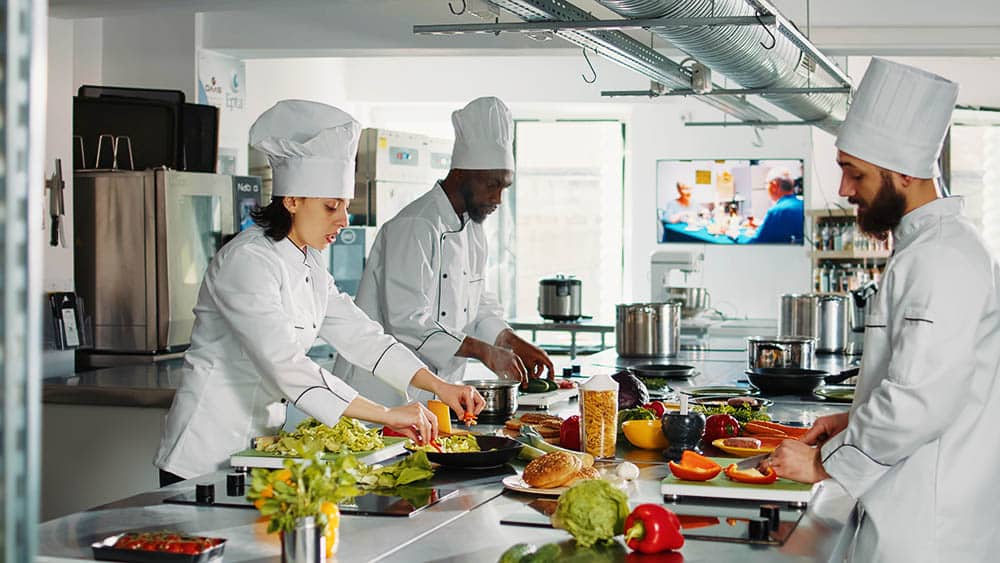Importance of Restaurant Decoration for Attracting Customers and Boosting Your Business
Opening a restaurant business is not an easy task. One has to plan and organize everything, and among those tasks, setting up a well-decorated interior is important to attract customers. People don’t visit restaurants just for the food; they visit for the ambiance, the atmosphere, the experience. That’s why restaurant decoration is crucial for attracting customers and boosting your business.
The Role of Decoration in a Restaurant Business
The decoration of a restaurant is not just about dressing up the venue with fancy furniture, expensive lighting, and upscale decorative items. More than that, it’s about sending a message of the type of food, culture, and experience the restaurant offers. Decoration has the power to influence customers’ emotions and decisions.
Customers are looking for an enjoyable dining experience, and decoration plays a vital role in meeting their expectations. A welcoming atmosphere tells customers that they are not just another customer but rather a guest, and guests always receive a warm welcome.
Attractive Decoration vs. Efficient Decoration
First impressions are very important for everything, and it’s the same for restaurants. Customers usually judge a restaurant based on the first impression they get when they enter.
Attractive decoration can grab customers’ attention, but if your decoration is just for show, it can only catch customers’ attention for a few minutes. Attractive decoration can bring customers to your restaurant, but it won’t keep them coming back. Efficient decoration, on the other hand, can attract and keep customers without being too flashy or over the top.
Efficient decoration considers ambiance, lighting, color, sound, and even aroma. Everything should harmonize together to create an atmosphere that customers will enjoy. For example, lighting sets the mood for customers, and a dimly lit restaurant can create a romantic ambiance. Color can also have an impact on customers’ emotions; for example, red can increase appetite, so it can be a good color for restaurants serving spicy food.
Decorative Styles and the Type of Restaurant
Different decorative styles suit different types of restaurants. Before choosing a decorative style, one should consider the type of cuisine served and the target market. An upscale restaurant that serves French cuisine may have a different decorative style than a casual diner that serves fast food.
Here are a few interior decoration styles that cater to the different types of restaurants:
Classic Style
The classic style is often associated with an upscale and formal restaurant. It commonly features rich colors, luxurious furniture, high ceilings, ornate light fixtures, and elegant accessories. The classic style suits restaurants that serve French, Italian, or fancy cuisine.
Modern Style
The modern style is minimalistic and focuses on clean lines and a simple arrangement of furniture. Color schemes are often monochromatic, with little-to-no embellishments. It suits restaurants that serve fusion cuisine or those that want a contemporary look and feel.
Rustic Style
The rustic style features a countryside look and is often associated with a warm and welcoming atmosphere. Attractive features include exposed brick walls, wooden furniture, and natural materials. The rustic style suits restaurants that serve classic comfort foods.
The Use of Art
Art is a great addition to restaurants as it can showcase the type of cuisine and culture displayed on the menu. It can also create an amazing atmosphere and stir customers’ emotions. For example, if your restaurant serves Italian food, displaying paintings of Florence, images of Venetian buildings, or pictures of the Italian countryside can create an atmosphere that immerses customers in the Italian experience.
Tips for an Effective Restaurant Decoration
While decoration is important for attracting customers and boosting business, it doesn’t mean that one should break the bank to achieve it. Cost-effective decoration elements are plentiful, and here are a few tips to get the most of out of your decoration efforts:
Know Your Target Market
Knowing your target customers is crucial in determining your menu and decoration style. Do your customers prefer a modern or classic look for their dining experience? Are they more interested in the atmosphere, or the menu? Understanding your customers can help you create an ambiance that suits their preferences.
Let there be Light
Lighting is an essential element in setting the tone and mood for a restaurant. Bright lights are ideal for fast-food establishments, while dimmer lighting creates a more relaxed and intimate atmosphere. The color of the lights can also influence customers’ emotions. Make sure that the lighting fixtures fit with the decorative style you choose.
Sound of Silence
Choosing the right music or ambiance sound can either enhance or detract from your customers’ dining experience. The music should not be too loud, distracting, or annoying, as this can create negative feelings. The sound should match the theme and atmosphere of the restaurant.
Use Your Space, But Don’t Overdo It
Using the available space effectively can create a comfortable and enjoyable dining experience for customers. But be careful not to overcrowd your restaurant with too many tables and chairs. Your customers need to be able to move around the restaurant and feel comfortable. When it comes to decoration, «less is more» approach often works out perfectly.
Knowledge of Color
Different colors create different moods and emotions, and this information can be used to create a perfect atmosphere. For example, red and orange colors are known to stimulate appetite, green and blue have calming effects, and yellow is associated with warmth and happiness. Choosing the right color scheme can enhance customers’ moods and emotions.
Conclusion
A well-decorated restaurant has the power to attract and retain customers. It influences customers’ decisions by creating a mood, ambiance, and experience that they can recall even after they leave the restaurant. The right decoration can be an extension of the food and culture that it serves, amplifying its theme, and evoking emotions that satisfy customers. By following the tips and information presented here, one can create a perfectly decorated restaurant that customers will enjoy and return to.
